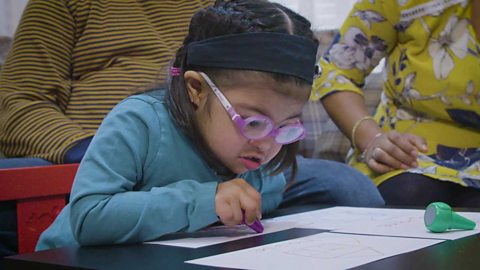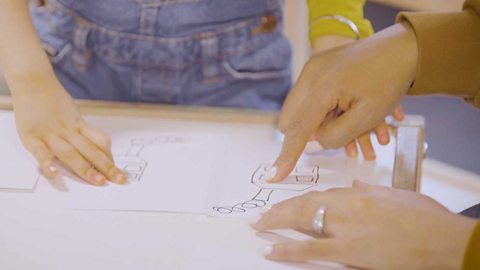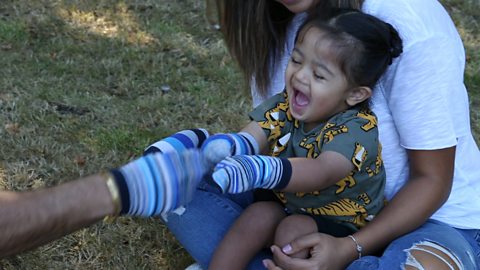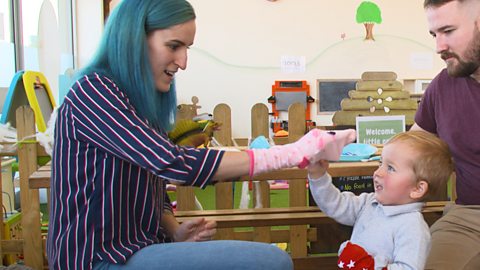Home > Activities > 2-3 years
Try making a sensory table for your little one using a combination of differently textured household items, materials and foods.
Children learn through their senses, so this is a great activity for children of all ages and abilities.
Watch the video below to see how our families find lots of opportunities for language development in sensory play.
What are the benefits of a sensory table?
- Sensory tables provide opportunities for your child to explore multiple senses, including sight, sound, touch, and smell.
- Describing the texture and feel of the items helps children learn new words.
- Making links between the senses they are using and the language they hear makes it easier for children to remember words.
- Digging, pouring, stirring, and scooping can strengthen your child's hand muscles and improve their fine motor skills.
- Playing with a sensory table is a very relaxing and calming experience for children who feel overstimulated.
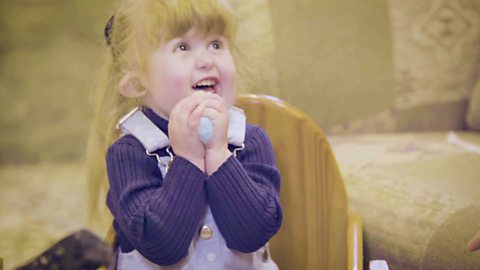
How to make a sensory table
There are loads of household items you can put on your sensory table. You don't need to buy anything new to help your child explore with their senses. Here are some items you could try:
- Cotton balls or pom poms
- Shredded newspaper or old paper
- Clothes pegs
- Washing up sponges
- Loo roll
- Porridge oats or rice
- Dusters or cloths
Whatever you put on your sensory table, let your child explore and get used to the unfamiliar textures. Let them lead the play and see what they want to do with the items.
They might want to sort the items, order them or start some imaginary play. You can chat through what they're doing and help them describe their actions.

Find out more about sensory play
- Find out more about sensory play and why it's great for your childÔÇÖs development.
- Enjoy some sensory fun with our homemade playdough recipe.
- Here are some expert tips about how children learn through play.

